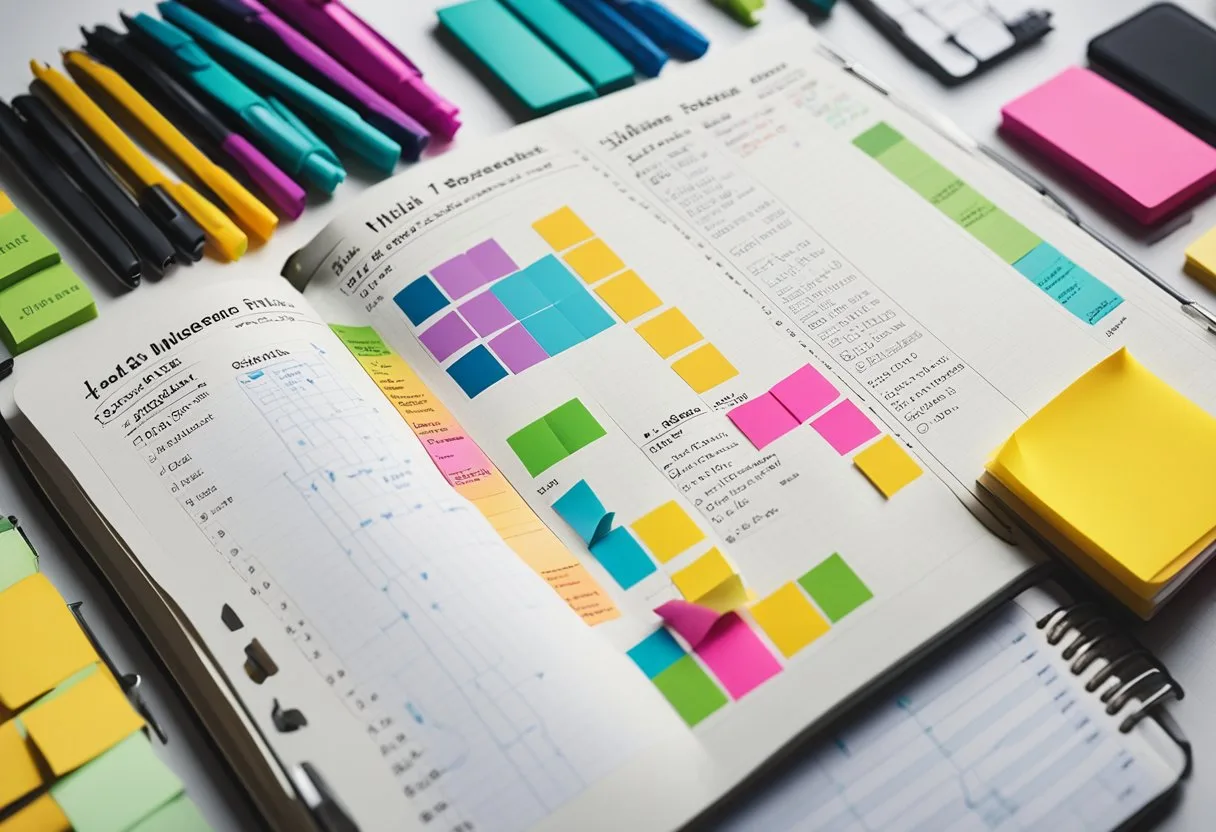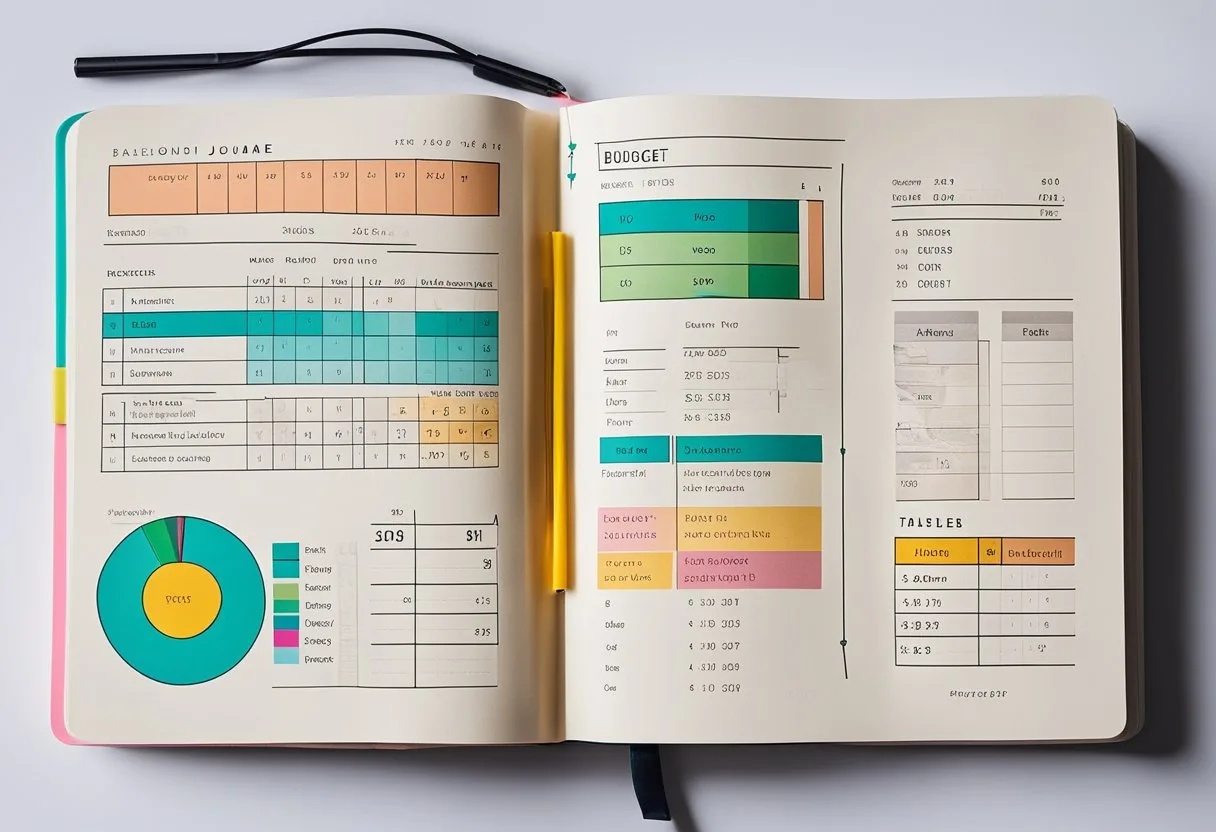Bullet journaling, or bujo for short, is a popular organization system that allows you to track various aspects of your life in one convenient place. One of the most popular uses for a bullet journal is as a spending tracker. In this blog post, we will discuss Bujo Spending Tracker and how to easily track your expenses using a bujo spending tracker.
Creating a bujo spending tracker can be as simple or as complex as you want it to be. Some people prefer to use a minimalist approach, while others like to include detailed charts and graphs. Regardless of your preference, the key is to find a system that works for you and stick with it. With a little bit of effort and dedication, a bujo spending tracker can help you take control of your finances and achieve your financial goals.
Setting Up Your Bujo Spending Tracker
Choosing the Right Supplies
Before creating a spending tracker layout, it is important to choose the right supplies. A bullet journal and a pen are essential. It is recommended to use a journal with a table of contents for easy navigation. Using colored markers or pens can help categorize spending and make the tracker more visually appealing.
Creating Your Spending Tracker Layout
When creating a spending tracker layout, it is important to keep it simple and easy to use. One option is to create a physical table with columns for date, item, cost, and category. Another option is to create a digital table using a spreadsheet program. It is recommended to include a section for notes to record any additional information about the purchase.
Establishing Spending Categories
Establishing spending categories is crucial for keeping track of expenses. Common categories include food, transportation, entertainment, and bills. It is recommended to color code each category to make it easier to identify and track. It is important to regularly review and adjust categories as spending habits change.
Setting up a bujo spending tracker can be a helpful tool for managing finances. By choosing the right supplies, creating a simple layout, and establishing spending categories, individuals can easily track their expenses and make informed financial decisions.
Tracking Your Finances
Tracking your finances is an essential part of managing your money. A Bullet Journal is a great tool for keeping track of your expenses, income, bills, and savings. Here are some tips for tracking your finances in your Bullet Journal.
Recording Daily Expenses
Recording daily expenses is the first step in tracking your finances. A simple way to do this is to create an expense tracker in your Bullet Journal. You can create columns for different categories such as food, rent, groceries, leisure, and miscellaneous expenses. By recording your expenses daily, you will be able to keep track of where your money is going and identify areas where you can cut back.
Managing Monthly Budget and Bills
Managing your monthly budget and bills is crucial for staying on top of your finances. You can create a monthly budget tracker in your Bullet Journal to keep track of your income and expenses. This will help you stay within your budget and avoid overspending. You can also create a bill tracker to keep track of your bills and due dates. This will help you avoid late fees and stay on top of your bills.
Monitoring Savings and Debt
Monitoring your savings and debt is important for achieving your financial goals. You can create a savings tracker in your Bullet Journal to keep track of your progress towards your savings goals. You can also create a debt tracker to keep track of your debt and payments. This will help you stay motivated and focused on paying off your debt.
Tracking your finances in your Bullet Journal is a great way to stay on top of your finances. By recording your daily expenses, managing your monthly budget and bills, and monitoring your savings and debt, you can achieve your financial goals and build a secure financial future.
Analyzing Spending Habits
Keeping track of one’s spending habits is a crucial aspect of achieving financial goals. A bullet journal spending tracker is an excellent tool for tracking expenses, but it is also important to analyze the data collected to identify trends and adjust goals accordingly.
Utilizing Graphs and Charts
One effective way to analyze spending habits is by utilizing graphs and charts. By visualizing the data collected in the spending log or monthly tracker, it is easier to identify patterns and trends in spending. For instance, one can create a pie chart to show the percentage of income spent on different categories such as food, transportation, and entertainment.
Identifying Trends and Adjusting Goals
Identifying trends in spending can help individuals adjust their financial goals accordingly. For example, if one realizes that they spend a significant amount of money on eating out, they can adjust their goal to reduce their monthly spending on dining out. By identifying areas where they tend to overspend, individuals can make informed decisions on how to adjust their spending habits to achieve their financial goals.
Analyzing spending habits is a critical step towards achieving financial goals. By utilizing graphs and charts to visualize data, individuals can identify trends and adjust their goals accordingly. A bullet journal spending tracker is an excellent tool for tracking expenses and achieving savings goals.
Enhancing Financial Planning
BuJo spending trackers are a great way to keep track of expenses and manage personal finances. However, they can also be used to enhance financial planning. Here are some ways to use your BuJo spending tracker to improve financial planning.
Planning for No-Spend Periods
One way to save money is to plan for no-spend periods. This means setting aside a certain amount of time, such as a week or a month, where you don’t spend any money on non-essential items. To make this easier, create a no-spend tracker in your BuJo spending tracker. This can be a simple table or list where you mark off each day that you don’t spend any money.
Setting Up Savings Challenges
Another way to enhance financial planning is to set up savings challenges. This can be done by creating a savings goal tracker in your BuJo spending tracker. For example, you could set a goal to save $500 in three months. To make it more challenging, you could also set up a reward for yourself if you meet the goal, such as a shopping spree or a weekend getaway.
Preparing for Future Expenses
Finally, BuJo spending trackers can be used to prepare for future expenses. This can be done by creating a wish list in your BuJo spending tracker. This list can include items that you want to purchase in the future, such as a new laptop or a vacation. By tracking these items, you can start saving money in advance and avoid overspending when the time comes to make the purchase.
BuJo spending trackers are a powerful tool for managing personal finances. By using them to enhance financial planning, individuals can save money, set goals, and prepare for future expenses.
Bujo spending tracker ideas
Creating a spending tracker in your bullet journal (bujo) can help you manage your expenses more effectively. Here are 15 spending tracker ideas and how to implement them in your bujo:
- Simple List Tracker: Create a list of expenses with columns for date, description, category, and amount.
- Color-Coded Categories: Assign a color to each spending category and color-code your entries for a visual overview.
- Weekly Spending Summary: Divide a page into sections for each week and log daily expenses to see weekly totals.
- Daily Spending Log: Dedicate a small section for each day where you jot down what you spent money on.
- Envelope System Tracker: If you use the envelope system for budgeting, create a page to track the cash balance of each envelope.
- Monthly Spending Chart: Use a bar chart to visually compare spending across different categories each month.
- Receipt Pocket: Attach an envelope or pocket to store receipts, and at the end of the month, log the totals.
- Themed Spending Tracker: Choose a theme, like a coffee cup for a coffee budget, and fill in the cup as you spend.
- Expense Wheel: Draw a circle and divide it into pie sections for each category to see the proportion of your spending.
- Savings vs. Spending: Create two columns, one for savings and one for spending, to directly compare the two.
- Bill Tracker: List all your recurring bills with due dates and amounts, checking them off once paid.
- Splurge Tracker: Keep a separate log for tracking non-essential or impulse purchases.
- Online Shopping Tracker: Make a dedicated tracker for your online purchases, including order date, arrival date, and amount spent.
- Cash Flow Tracker: Log your income and expenses side by side to monitor your overall cash flow.
- Yearly Spending Overview: Create a spread for the year with a line graph or bar chart to track spending trends over time.
To implement these spending tracker ideas, you’ll need to regularly update your bullet journal with your financial transactions. The key is to choose a method that resonates with your personal finance style and that you find easy and enjoyable to use. This will help ensure that you stay consistent with tracking your expenses.
Frequently Asked Questions
What are some creative ideas for setting up a budget notebook?
There are many creative ways to set up a budget notebook using bullet journaling. Some people like to use a color code to differentiate between different budgets, such as food, rent, expenses, groceries, leisure, restaurants, and miscellaneous. Others prefer to use symbols or icons to represent different types of expenses. You can also add a forecast column to your budget notebook to help you plan for the future.
How can one effectively use a bullet journal for monthly budgeting?
To effectively use a bullet journal for monthly budgeting, it is important to set clear goals and track your spending carefully. You can create a monthly spending tracker, where you write down all of your expenses and income for the month. You can also create a monthly budget, where you set limits for each category of spending and track your progress throughout the month.
What templates are available for tracking spending in a bullet journal?
There are many templates available for tracking spending in a bullet journal. Some popular options include a monthly expense tracker, a bill tracker, and a debt payoff tracker. You can also create your own custom templates based on your specific needs and goals.
Are there any printable resources to help with expense tracking in a bullet journal?
Yes, there are many printable resources available to help with expense tracking in a bullet journal. You can find free printable templates online, or you can purchase pre-made templates from stationery stores or online retailers. These templates can help you save time and make your expense tracking more efficient.
Can you recommend any apps that integrate well with a bullet journal for spending tracking?
While there are many apps available for spending tracking, not all of them integrate well with bullet journaling. However, some popular options include Mint, PocketGuard, and YNAB (You Need a Budget). These apps can help you track your expenses and income, set budgets, and plan for the future.
What are the best practices for maintaining a paper-based spending tracker?
To maintain a paper-based spending tracker, it is important to keep your journal organized and up-to-date. You should set aside time each day or week to record your expenses and income, and to update your budget and spending tracker. You should also keep your journal in a safe and secure location, and consider using dividers or tabs to keep your different sections organized.



